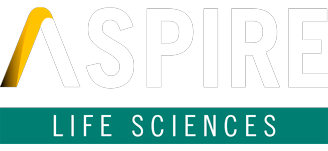What are the challenges and benefits of hiring fractional senior members and advisers?
By James Trott.
The short answer
The wrong fractional hire will drain time, cash, and energy faster than you think. The right one can take you from Series A to Series B, open up new markets, or stop you making a expensive mistakes.
The benefits are clear: access to deep expertise without long-term cost commitments, plugging skill gaps quickly, and injecting fresh perspectives that accelerate decision-making. The challenges? Cultural fit, continuity, and making sure you’re not just buying a CV but securing outcomes.
What makes this work is a clear mandate, alignment with your stage and strategy, and a willingness from the leadership team to embrace outside input.
The long answer
Hiring fractional senior members or advisers can be one of the smartest moves a founder-led organisation, startup, or scaleup makes, but it’s not without its traps.
-
Experience and knowledge at your fingertips
Fractional leaders often bring decades of experience. For early-stage or scaling businesses, this can be transformative.
We’ve seen a fast-growing biotech bring in a fractional CCO rather than wait six months to hire full-time. In half a year, they had a go-to-market plan, doors opened in two new regions, and a team being coached by someone who had done it before.
But here’s the challenge: don’t just pay for a CV. Experience has to translate into action and results. That requires absolute clarity on deliverables from day one.
-
Cultural fit matters as much as skills
Dropping a new senior player into a founder-led team can destabilise dynamics. Cultural fit is often the difference between traction and frustration.
A fractional adviser should feel like a partner, not a consultant parachuting in with generic playbooks. The best ones “get” your mission, your pace, and your constraints. The wrong ones don’t, and they’ll slow you down.
-
Plugging missing skills and bringing in something new
Fractional hires are most effective when they complement, not duplicate, the board. Common scenarios include:
- A scientist-led startup adding a commercial operator to balance technical depth with market strategy
- A founder team with strong product skills but little regulatory expertise bringing in an adviser to navigate approvals
- A scaleup bridging Series A to B with financial rigour from a part-time CFO
- A biotech moving into trials by bringing in a fractional CMO
- An AI & Data Expert adding digital and AI expertise to transform the data strategy
These aren’t stop-gap measures. They’re often catalysts for innovation, pushing organisations beyond their comfort zone.
-
Diversification of mindset and networks
Many early-stage TechBio companies are built by founders who all come from the same background. That creates continuity, but also groupthink.
A fractional adviser can break that cycle. They don’t just bring skills; they bring a different way of thinking. They challenge assumptions. They open new doors. In some cases, the introductions they make to investors, regulators, or strategic partners are as valuable as the advice itself.
Sometimes, their phone book is the biggest asset.
-
Innovation and approach
Fractional leaders have usually seen multiple business models succeed and fail. That perspective is gold.
We worked with a medtech client who avoided an expensive FDA delay by working with a fractional adviser who had done it before. That single decision saved months of time and serious capital.
The challenge? Balance. Advisers mustn’t overshadow the founder’s vision. The best relationships are a mix of support and empowerment.
-
Continuity and knowledge transfer
Here’s the part few founders think about: fractional hires rarely stick around forever. Most enjoy the portfolio lifestyle and don’t want to go permanent. When they move on, you risk losing their expertise overnight.
The smart play is to plan for it. Pair them with a junior/mid-level hires who can absorb skills, or create clear succession. Not all roles allow this, but where it’s possible, it protects against the gap that appears when the fractional talent steps away.
-
Mandate, goals, and feedback loops
The companies that get the most from fractional hires are deliberate. They:
- Define clear goals and outcomes upfront
- Share a realistic mandate with the adviser
- Build a feedback loop to track impact
Without this, the relationship drifts and both sides get frustrated.
Final thoughts
Hiring fractional senior members or advisers isn’t about filling a seat. It’s about unlocking growth, diversifying perspective, and fuelling innovation. The benefits are compelling, especially in life sciences and TechBio, where expertise is scarce and the stakes are high.
But it only works if boards are deliberate:
- Be clear on what needs fixing
- Be intentional about cultural fit
- Plan for continuity and knowledge transfer
- Stay open to fresh thinking
Do that, and you’ll not just get advice, you’ll get lasting impact.
About the author
James Trott co-founded Aspire in 2013 but has been working in the Finance & Life Sciences space since his arrival to the UAE in 2009. He brings with him a wealth of experience and has grown the business based on relationships he has cultivated over the decade he has spent in the Middle East. His focus areas include Finance/Accounting, Medical & Technical Pharmaceutical’s including, Regulatory Affairs, Compliance, Market Access, Medical, Compliance and Finance.
James’ strength lies in building strong relationships with Senior level executives as well as retaining business and ensuring best practice methods are always at the forefront of the companies’ service.






Leave a Reply